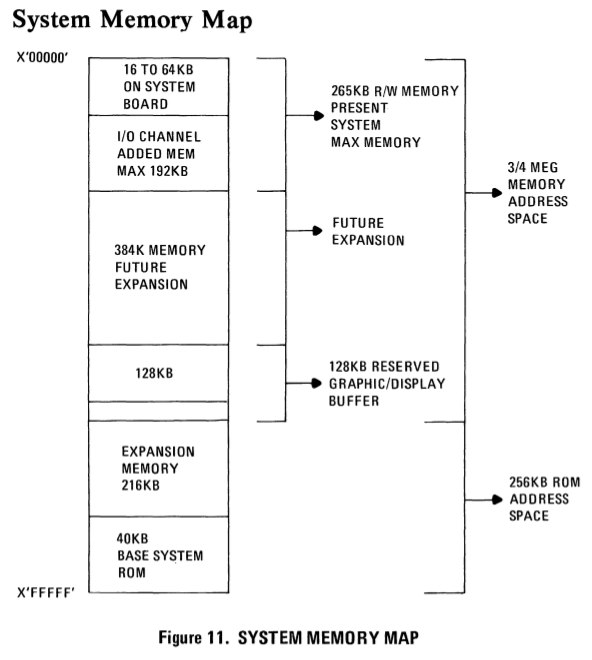We all know that "640K should be enough for everyone". But who actually set this limit? The quote is often attributed to Bill Gates, but it doesn't seem like a decision for an Operating System vendor to make. And does MS-DOS have some kind of 640K limit? Doesn't it just come from the hardware?
But maybe Bill Gates was consulted on the matter, perhaps? And if he was, by whom?
I feel we need to establish a timeline of key decisions made in the IBM PC memory architecture. When did Microsoft become involved with the IBM PC design? Was the 8086 processor already designed?
As far as I know, the 8086 has two magical addresses. The first is the beginning of vectors, which is address zero. The vectors need to be mutable, so RAM must be attached to this address. Thus each 8086 system needs RAM at address zero, the beginning of address space.
The second magical address is the Instruction Pointer reset value, the location from where the 8086 starts execution. Since that boot firmware must be fixed, there must be ROM at that address. The end of memory space was chosen for this location, address 0xFFFF0 to be exact.
Was Microsoft involved in these two decisions, which must have been done at Intel? I find that hard to believe. Who at Intel chose these addresses? Was it Stephen P. Morse, the 8086 principal architect?
This leads to the biggest question at hand, the 640K limit. Who set it? Where does it come from? I know that EGA and VGA video cards have memory at that address, address 0xA0000 onwards. But didn't these cards come, like, a decade after the release of 8086 and the first version of IBM PC?
So, was there a 640K limit in the original IBM PC? Or did that come later? Was there something attached to the 0xA0000 address in the original PC? Some original video card that was used on the PC? Something else? Who designed that hardware and chose that it would use the memory at 0xA0000?
Having designed quite a few embedded computers already back in the days when external logic was always needed for address encoding, I can kind of see how it could have happened. In my imagination it's like "Ok, I've got this RAM at zero and the BIOS eprom at 0xF0000 so where should I place the video RAM...? Hmm, somewhere near the end, I think, so I can expand the main RAM... but not at the very end so I can expand the video RAM too... let's put it a 0xA0000, it's a nice round figure... we can change it at the next PCB revision anyway... Ok, ship it." But would it have happened like this?
Was there some early consencus on breaking the continuous memory address space at 0xA0000? Who chose it? Was it some clerk behind a typewriter, making history? Some engineers at a meeting, late for a lunch appointment? Maybe some guy with a soldering iron or a wirewrap gun, hacking up the first prototype of... what?
We need to get to the bottom of this, the world needs to know!
